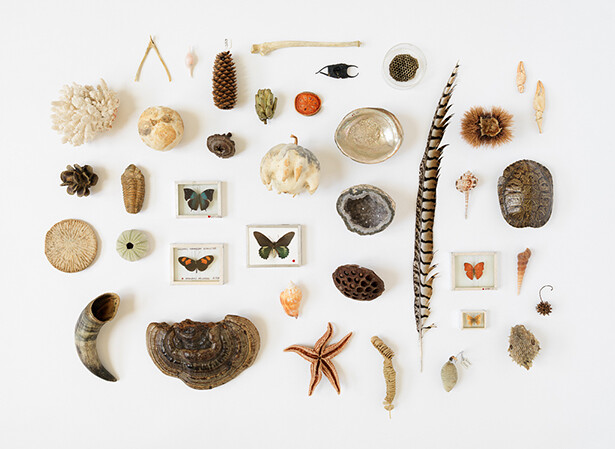Rhode Island School of Design (RISD)
Two College Street
Providence, Rhode Island 02903
K–12 teachers now have free online access to object-based lesson plans inspired by collections at the RISD Museum and Nature Lab
Rhode Island School of Design (RISD) has partnered with PBS LearningMedia, a media-on-demand digital service that provides Pre-K–12 educators free access to more than 100,000 classroom-ready digital resources, to offer new STEAM lessons via its online platform. RISD’s first two publicly available STEAM lessons—Attention and Perception and Discovery Through Juxtaposition—draw on expertise and inspiration from the college’s Edna Lawrence Nature Lab and RISD Museum.
Championed by RISD, STEAM is a movement that advocates adding art and design to the national STEM agenda (STEM+A=STEAM). A comprehensive educational model focused on developing the creativity and problem solving necessary to foster growth and competitiveness in the coming century, the STEAM initiative aims to better prepare students to compete in an innovation-driven economy.
“RISD’s new STEAM lesson plans focus on the importance of object-based learning in encouraging the research, close observation and critical analysis that both artists and scientists share in common,” notes Tracie Costantino, RISD Dean of Faculty. “The demand for STEAM resources has picked up in the past few years as teachers recognize the importance of incorporating creative thinking and visual learning into their classrooms. Working with PBS LearningMedia, we are now able to begin to satisfy their hunger for connecting the arts and sciences in ways that resonate with students of all ages.”
Based on the same approach to problem solving used in RISD studios and classrooms, these lessons emphasize close observation and object-based learning as a means of analyzing and understanding the world from various perspectives—building on a disciplinary depth within a transdisciplinary approach. This approach encourages students to recognize relationships, connect the dots and see a larger picture. Through the process of critique—another essential component of a visual arts education—students develop the ability to practice self-reflection and analysis, articulate their ideas, and discuss constructive critical feedback in a supportive environment.
In Attention and Perception, designed for children in upper elementary and middle school classrooms, students identify and analyze the choices artists and scientists make when representing living species and other objects in nature. After making drawings of specific natural objects, students (guided by their teacher) talk about the process of representing information and carefully analyze and compare their drawings with that of a 16th-century artist. Classroom discussions and writing prompts help illuminate how and why choices about visual representation can reveal a larger understanding of the subject matter.
Discovery Through Juxtaposition looks at the impact of how objects are grouped and categorized based on the personal ways we process information and create meaning. In this two-part lesson, students first sort, arrange and rearrange images of natural specimens thematically. Then, using images of objects and works from the RISD Museum’s collection, they do the same with works of art, so that they begin to recognize the evolutionary relationships and systems of taxonomy underlying the study of both art and the natural sciences. The lesson is designed to help hone perceptual skills while adding nuance and complexity to students’ understanding.
“The vision of the new Next Generation Science Standards is one of better integrating practices and design into science instruction,” says Rachel Connolly, PBS LearningMedia Director of STEM. “The blending of art and STEM into STEAM offers student experiences that are both inspirational and integrated. As PBS LearningMedia seeks to deliver high quality digital media to teachers, we are thrilled to have RISD—a leader in STEAM—as a new partner and content contributor.”
RISD’s advocacy of STEAM has spurred a growing conversation about the importance of innovation and creativity—essential qualities nurtured by an art and design education—to today’s employers and to fostering economic growth and competitiveness in the years ahead. It also recognizes that this visually driven approach to education needs to start at the Pre-K–12 level.
Jaime Marland:
T +401 427 6954 / [email protected]


